Citizen science helps the ancient Wollemi Pine endure
Home gardeners from around the world are providing scientists with crucial data to help ensure the rare Wollemi Pine's survival.
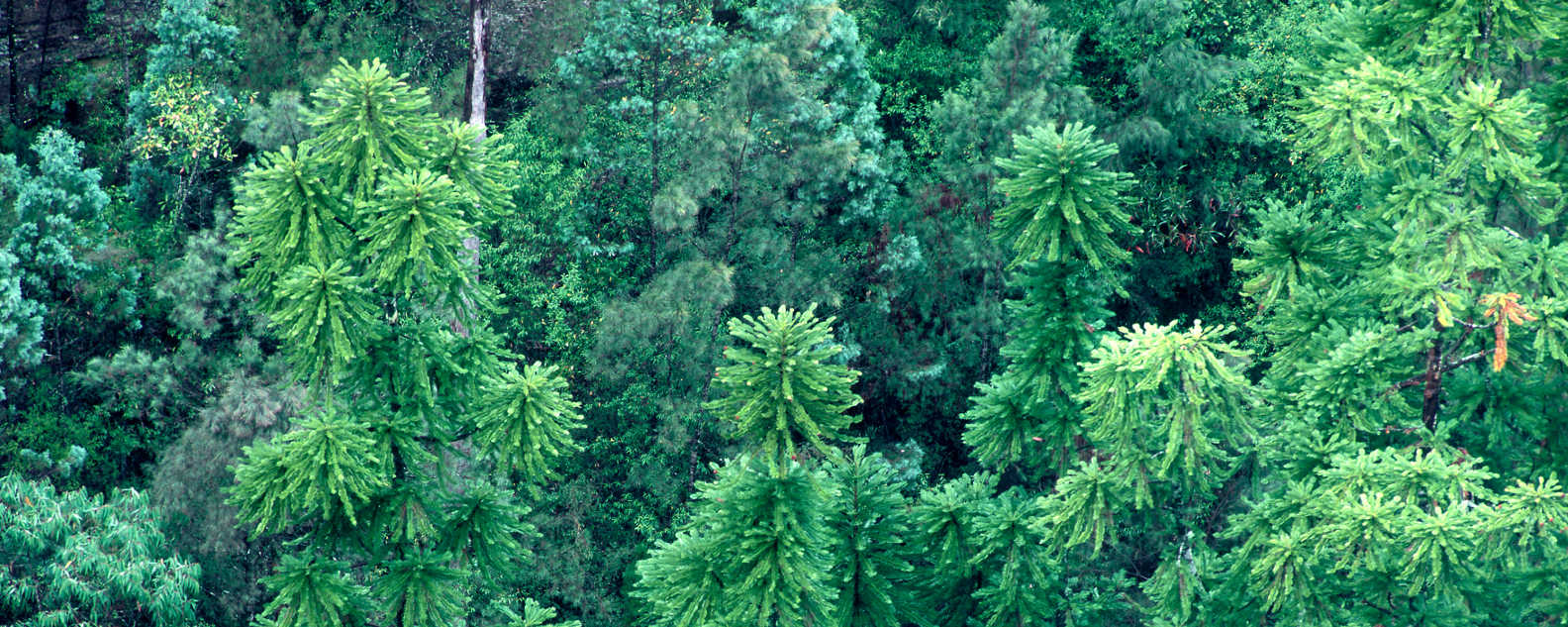
When a group of Wollemi Pines – an ancient tree species only known from fossil records – was discovered in 1994, it was heralded as one of the most remarkable botanical discoveries of the century. Now, home gardeners from around the world are providing scientists with crucial data to help ensure this rare plant’s survival.
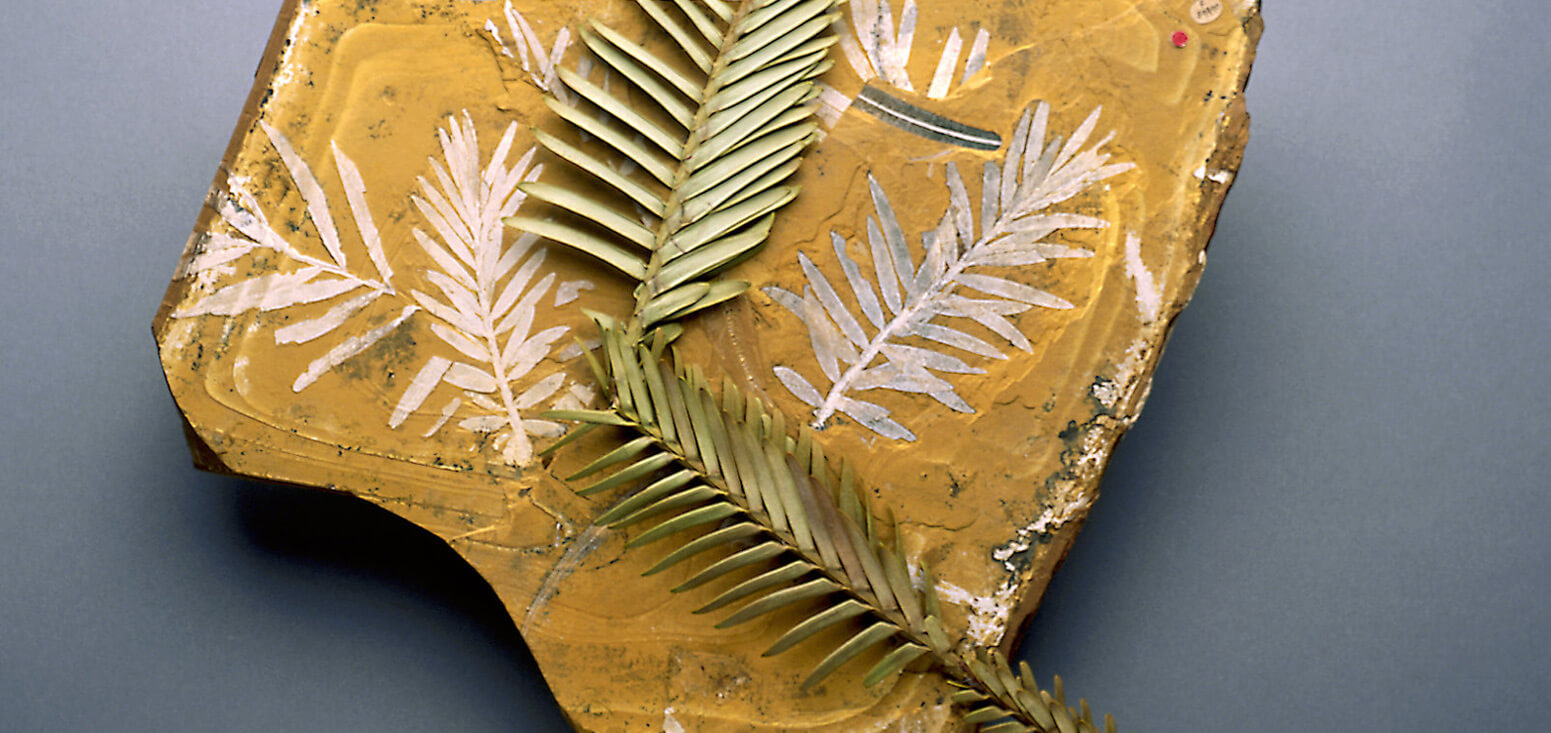
Finding a living fossil
In September 1994, NSW National Parks officer David Noble stumbled across an unfamiliar yet striking group of tall pine trees. Nestled in a deep, narrow canyon in the Blue Mountains in New South Wales, Noble had unknowingly uncovered an ancient species with origins dating back more than 60 million years.
The discovery of the species, whose lineage dates to the Cretaceous period, sparked great excitement in the botanical world. Scientists compared the discovery to finding a living dinosaur and declared the tree Wollemia nobilis.
The Wollemi Pine is a conifer (a group of plants that bear cones). The Monkey Puzzle Pine and Norfolk Island Pine are among its closest living relatives. Fewer than 100 mature trees exist in the wild and the exact location in the Blue Mountains has been kept secret.
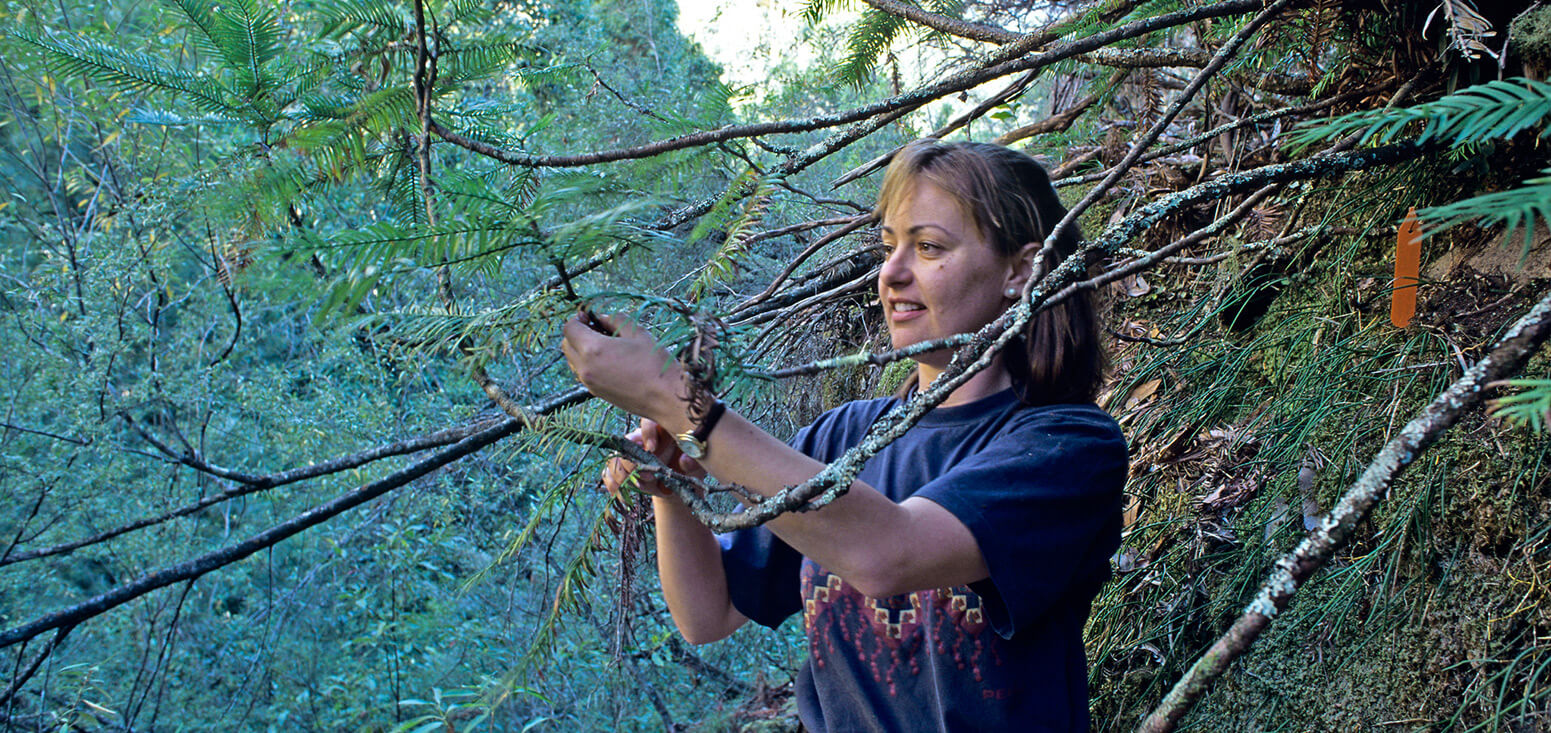
Dr Cathy Offord with a Wollemi Pine after the species was first discovered in 1994. Image: Botanic Gardens of Sydney
I Spy a Wollemi Pine
The discovery of the ‘dinosaur tree’ captured hearts all around the world. Initially, Wollemi Pines were only cultivated in botanic gardens, and were often kept in protective cages. The plant was first made available to the public in 2005, and from there, their popularity exploded. Today, they can be found thriving in parks, gardens and backyards across the globe.
With this increase in popularity came an opportunity to learn more about this fascinating species. In December 2019, Dr Cathy Offord from the Botanic Gardens of Sydney and Dr Heidi Zimmer from CSIRO launched the I Spy A Wollemi Pine citizen science survey. The survey invited anyone who was growing a Wollemi Pine in their home garden or had spotted one in their local area to share their knowledge about the plant. It included questions about location, soil type, fertiliser use, growth in pots versus planting in the ground, tree height and more.
Incredibly, more than 1,500 people from across 31 countries responded and created an enormous pool of data. The survey revealed the ancient tree’s preferred environment and growing conditions, finding that Wollemi Pines thrived in temperate climates with temperatures between 3.2 and 25.4C, and above-average rainfall. It also found that the tree took a particular liking to loamy soil.
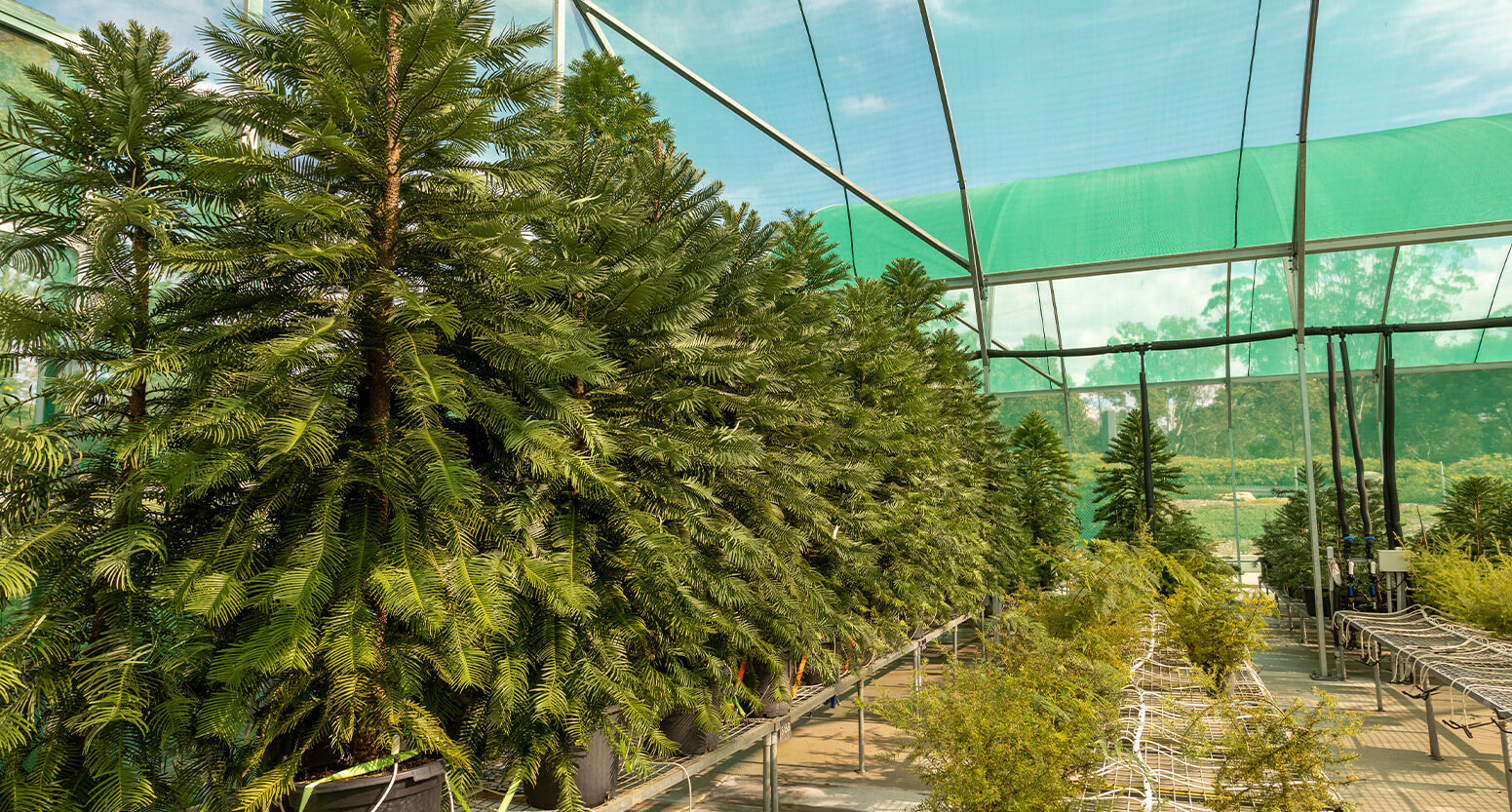
Wollemi Pines can be grown in pots for many years but need to be planted into the ground if they are to reach their full 40-metre-tall potential. Image: Glenn Smith/Botanic Gardens of Sydney
The future of the Wollemi
The information from the survey is crucial to safeguarding the future of this special plant, including helping identify the best conservation sites around the world.
“Our survey found that Wollemi Pines are successfully established in gardens in many parts of the world and are amenable to a variety of horticultural situations,” Cathy explains.
“Importantly, the results inform us where it is possible to grow this species.”
Dr Cathy Offord
As the climate continues to warm, the development of a genetically diverse and globally dispersed collection of Wollemi Pines will help increase the survival chances of this critically endangered species.
“We hope this project will encourage people to try different ways of growing Wollemi Pines,” Cathy says.
“They grow really well in pots for many years, but many eventually need to be planted in the ground as they are a large tree in their rainforest environment.”
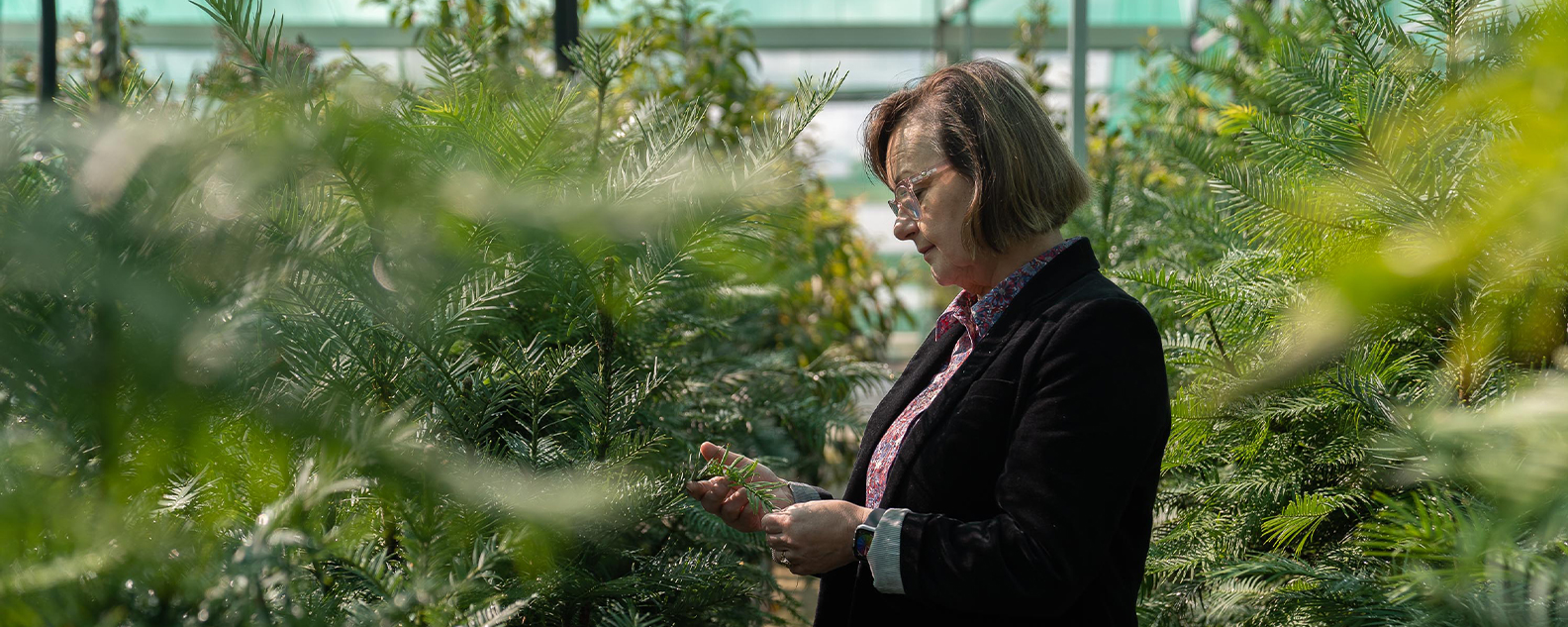
Dr Cathy Offord inside the nursery at the Australian Botanic Garden Mount Annan where Wollemi Pines are grown for research and conservation purposes. Image: Michael Santos/Botanic Gardens of Sydney
The ancient plant can reach soaring heights, with the tallest in the wild measured at a staggering 42 metres. It has a distinct bubbly bark and usually more than one trunk - some grow up to more than 20. This is a unique survival trick called ‘self-coppicing,’ which helps the tree survive if its other trunks are damaged.
“The ultimate goal of our research though, is to ensure that this species continues to grow and thrive in its native habitat.”
“We would like to thank everyone who responded to our survey. Your knowledge will help us protect the future of the Wollemi Pine.”
The paper ‘Home gardens contribute to conservation of the critically endangered Wollemi Pine: evaluation of a botanic garden-led horticultural release program’ was published in the journal Plants, People, Planet.
Tune in to Branch Out
To learn more about the ‘dinosaur tree’ listen to Branch Out Episode 4, No Plants No Past.
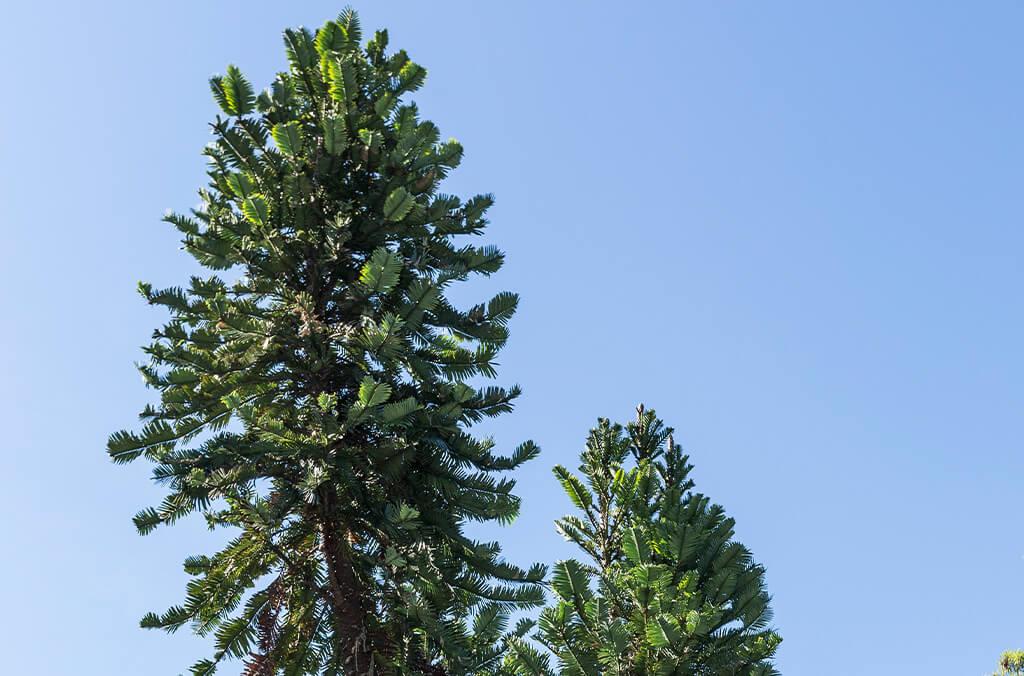
The Wollemi Pine can reach soaring heights, with the tallest in the wild measured at a staggering 42 metres. 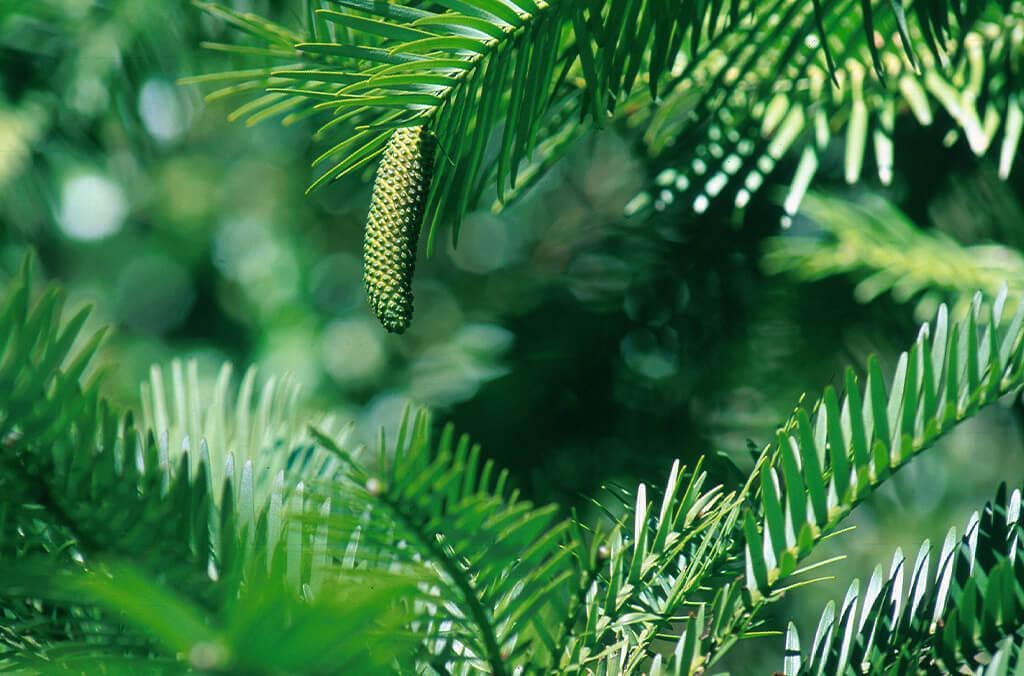
The trees have both male and female sexual reproductive cones. 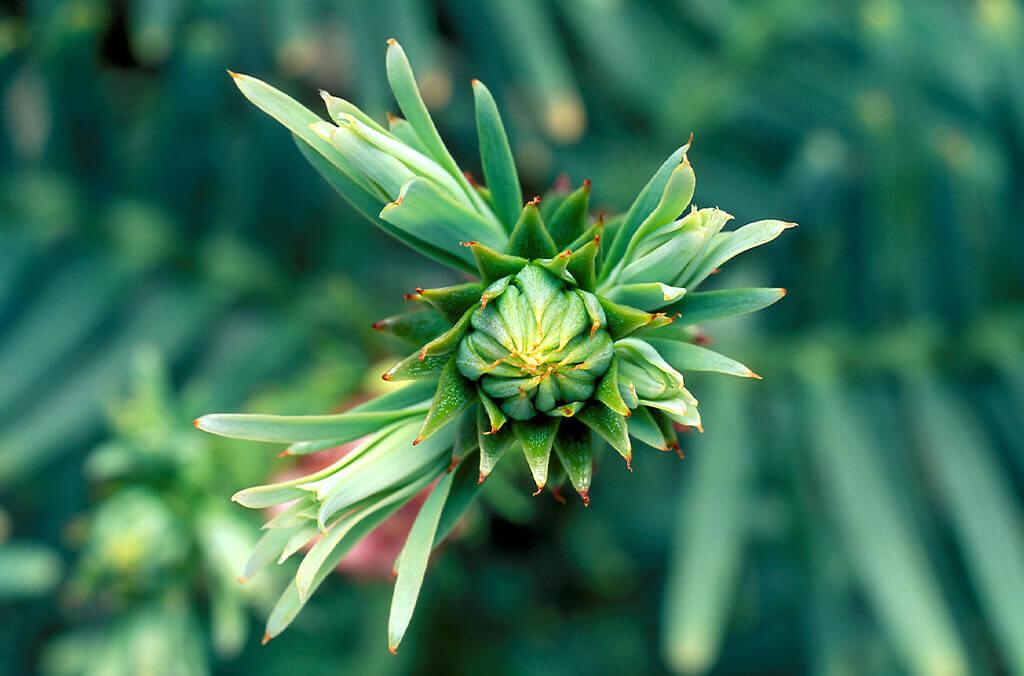
The Wollemi Pine is named after the Wollemi National Park, in the World Heritage-listed Blue Mountains, where David Noble first discovered it. 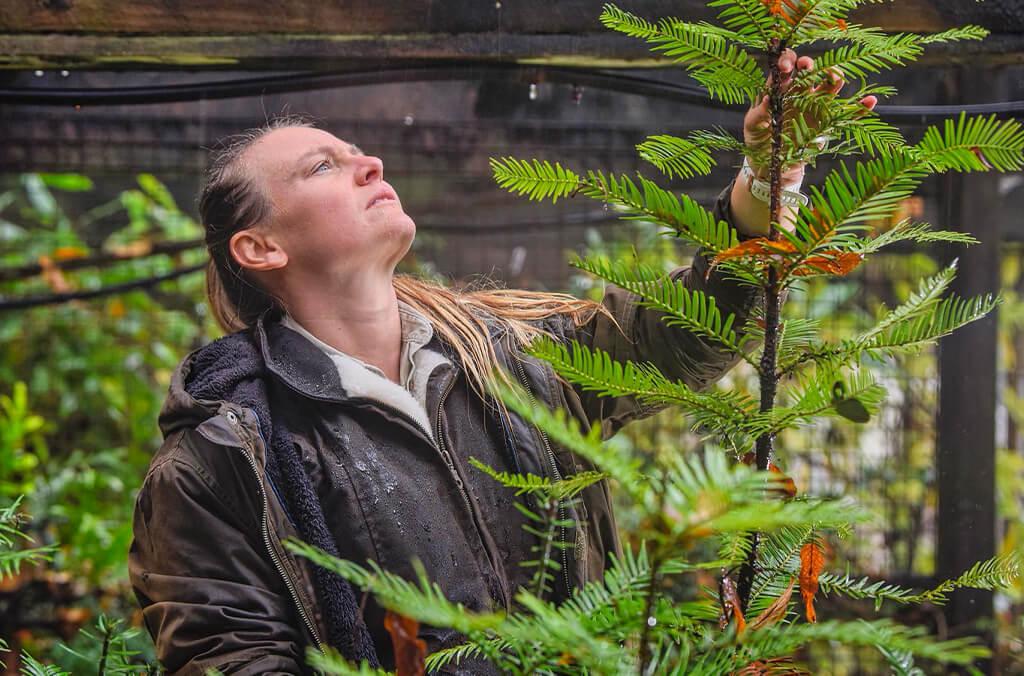
Scientists and horticulturists at the Botanic Gardens of Sydney have played a vital role in conserving the Wollemi Pine. 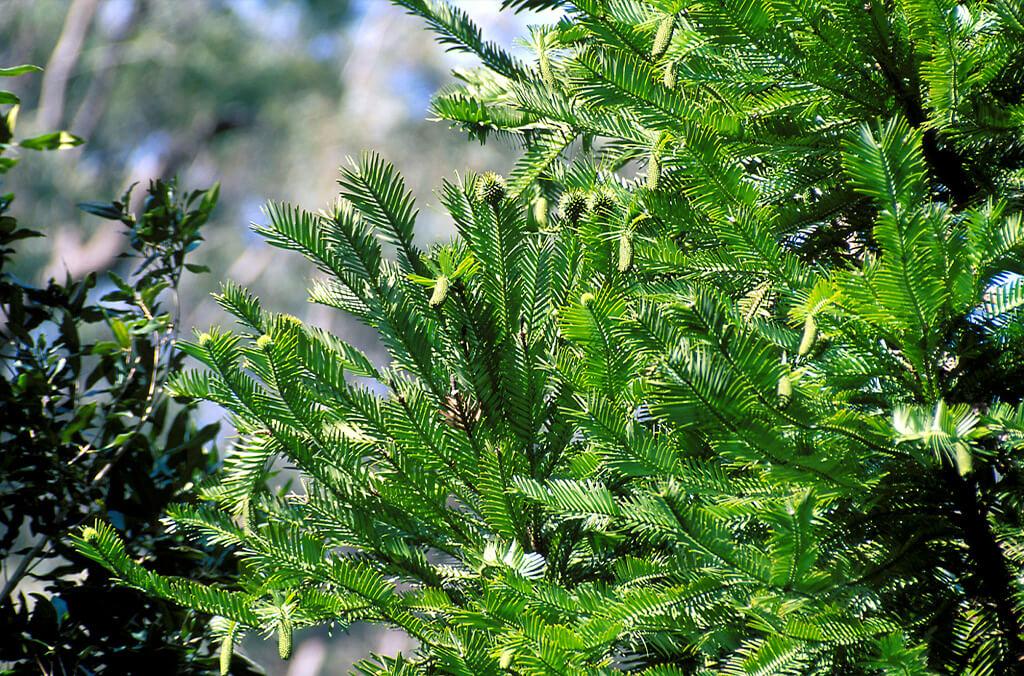
Wollemi Pines are easy to grow at home, even in pots and balconies.

For the team at the Research Centre for Ecosystem Resilience (ReCER), a request from the Blue Mountains Botanic Garden to design a hedge of the towering Nothofagus moorei, or Antarctic beech, sparked a unique collaboration between science and horticulture.
In the lower Hunter Valley, a new nature reserve named Tiraki – Wonnarua for ironbark – has become a sanctuary for one of Australia’s rarest plants.
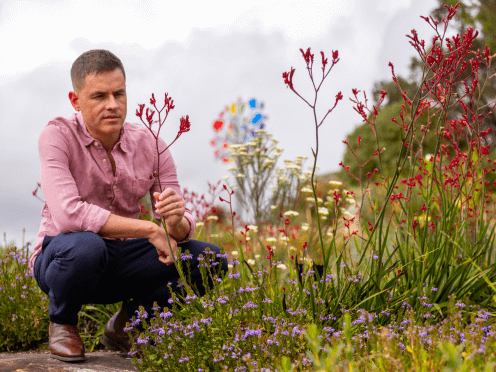
In this new episode of What the Flora!? discover why this world-first global ‘Tree of Life’ study is a new milestone in understanding the evolutionary history of flowering plants.